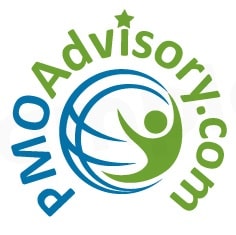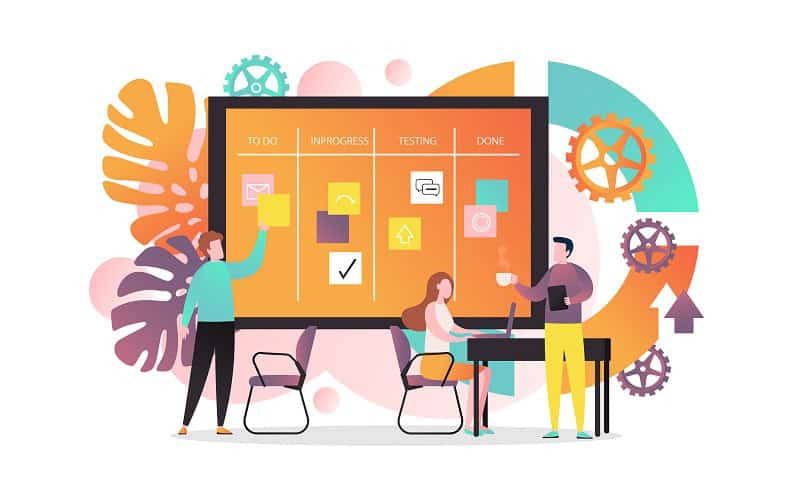As we have witnessed and experienced in the last few months, being adaptable is critical for all of us, particularly for businesses. I watched multiple Universities go from lively campuses, full of students, to online environments in just over a week. We all watched restaurants in our communities go from waiting lists at dinner, to waiting for takeout. As I watched many businesses around me adapt and accommodate, reinvent and recreate, I considered for myself, what do I need to do differently, how do I innovate? Although I didn’t have an immediate answer, I did know that my response required adaptation and agility.
In this pandemic, we have seen a number of businesses adapt, in an effort to survive. At the same time, there are many businesses which are reinventing themselves in an effort to thrive! Both of these strategies require business agility. This makes incredible sense, as the focus of an Agile approach is on value to the customer. At a critical time like this, we need to adapt and reinvent, with a focus on what provides the most value to our customers. This article provides an example of one business and how they adapted.
Among the many companies that were significant impacted by the Coronavirus Pandemic and needed to quickly shift their organization, was a physical therapy company that was started by two seasoned therapists just over a year ago. These partners brought their advanced skills, reputations as industry leaders using cutting edge technology, and client bases with them. They relied on getting new business from physician and surgeon referrals.
The owners created an organization with a functional structure. They had three employees that managed the customer service, operations, and reception functions. About six months into their first year they were able to hire two less experienced physical therapists to meet the increasing demand for services. Like many companies they were envisioning steady growth, relying on the relationships they had built with physicians and past clients. By the middle of March, physicians and surgeons were no longer seeing patients because of the risk of infection by the Coronavirus. The company’s source of new clients completely dried up. The writing was on the wall. The company had to find a solution, and do so quickly. The managing partners were not at risk, but the junior therapists had to come up with a way to get new clients or risk being furloughed.
The President of the company received permission to do Tele-Health sessions as soon as the legislature in their state allowed for it. Prior to COVID-19, physical therapy practices were not allowed to do Tele-Health sessions. Two weeks after receiving permission, the company completed a project implementing Tele-Health in their company. The change helped the company continue with their existing clients, but did nothing to bring in new business for their employees. Morale had been sinking in the company. They have had to pivot daily with rapid changes. A wise man noted: “If the rate of change on the outside exceeds the rate of change on the inside, the end is near” – Jack Welsh (Anderson, D. et. al.)
The company realized they needed to be more adaptable to the changes they were dealing with. What about Agile? It is in perfect alignment with the inherent goals of this company. With the adoption of Agile, the company could create “Minimum Viable Products (MVPs)” that would serve several functions. They would create brand recognition organically, bring in new clients, and pave the way for full products and services that could be added to the company portfolio.
What Is Agility?
It is not the adoption of a few practices to get through the hard times. It is metamorphosis on a cellular level, the harnessing of change as the driving force. Agility is a mindset. As outlined in “The Agile Manifesto”, four values combined with a set of practices were originally developed for the software industry. Companies like Google and mobile providers use Agile methods to produce weekly updates that deliver ongoing value to their customers. Agile processes promote sustainable development through iterative processes. Taking a big idea, breaking it down into smaller sections, and creating a usable product for each of them. The cornerstone is continuous improvement along with customer-centricity. People over processes, valuing the individual, their contributions, and collaboration are intrinsic to Agile.
Implementing Agile
As few as two people can work as an Agile team successfully. In this example, the junior physical therapists would be ideal for this. The team will need a Product Backlog, or high-level prioritized task list for the project. They can choose tasks from the list that they can complete in a specified time period. One week or two weeks would work for this type of project. That designated timeframe remains constant throughout the whole project. In Agile terminology, this is called an iteration. They needed a Kanban board or task board, divided vertically into three sections. The far left, under the heading “To Do” is the list of items they chose to complete from the Product Backlog. The next heading is “In Process”, and the final one is “Done”. Tasks move from heading to heading as they proceed. There must be a completed product at the end of the iteration.
Agile training would be needed to show the team members exactly how to accomplish this. Investing in training and learning to be Agile is the best thing that any company can do during these times of disruption and rapid change. Agility is a framework of continuous improvement. There always advances in the industry. An Agile company includes training in its business plan, without it, they are just making the motions.
Challenges in Agile Transformations
The challenges in an Agile transformation can be successfully mitigated by following the training steps outlined in the suggested transformation plan. Agile training includes fun team building activities that will help ease the transition. Some common challenges include:
- The company fails to communicate the vision and strategy for an agile transformation.
- Rushing the transformation process.
- Failing to provide adequate support.
Contraction, Resistance to Change, Is the Primary Cause of Injuries And Accidents
The same holds true for companies in crisis. Redirect the focus away from the fear of failure to becoming a front runner an industry leader through Agile. Agile adoption is the perfect solution to always being ahead of the game, no matter what is happening in the world. It is a way to ensure continuous competitiveness.
Changing the company culture takes time. Adopting Agile is a process, not a once-and-done task. Once an organization takes on an Agile Mindset, Agility is in the lifeblood of a company. Embracing and truly experiencing Agility, they will be forever changed and forever changing.
Why not make this shift? What does an organization have to lose? Agile provides the flexibility to move, adapt, and pivot in the market. A company can work on projects and tasks that are most valuable and they can use the Agile Mindset to support continuous learning/ improvement and adaptation. Organizations that use Agile deliver the products, services, or results that matter most to their customers and the market, and they deliver them faster than the competition, reaching heights that weren’t imaginable before. Above all, Agile is fun. Agile teams have fun. Clients feel the excitement of the company; it is all a great adventure and everyone is glad to be in it. Consider for yourself if this is a time for your organization to adopt agility…
If you’re interested in learning more about agile project management please contact Susan Parente (sparente@pmoadvisory.com) or use the following link to register for my next PMI-ACP course! https://www.pmoadvisory.com/pmi-certification/agile-acp/ I look forward to hearing from you and hope to see you at a future class!
If you are interested in connecting with either of the authors of this article, please find us on LinkedIn.
Authors: Susan Parente (Senior Instructor at PMO Advisory) and Felicity Dean (co-author and main researcher for this article)
About the Author:

Susan Parente (PMP, PMI-RMP, PMI-ACP, PSM I, CSM, CSPO, CISSP, CRISC, RESILIA, ITIL, GLCP, & MS Eng. Mgmt.)
Senior Instructor
Susan Parente is an instructor at PMO Advisory, an Associate Professor at Post University, Adjunct Professor at Montclair State University, and a Lecturer at University of Virginia. She is an author, mentor and teacher focused on risk management, traditional and Agile project management. Her experience is augmented by her Masters in Engineering Management with a focus in Marketing of Technology from George Washington University, DC, along with a number of professional certifications. Ms. Parente has 18+ years’ experience leading software and business development projects in the private and public sectors, including a decade of experience implementing IT projects for the DoD.
Felicity Dean (PMP)
Felicity Dean is a business and training consultant whose great adventure is uncovering “the missing link”, the piece of the puzzle that leads to big change. It is how she helps companies solve problems, large and small.
Privileged to serve as a Chief Election Officer for Fairfax County since 2015, she has supervised as many as fifteen people during an election. Concurrently, she assists companies in creating solutions and provide training and transition services to international professionals.
While on a project with the U.S. Department of Labor in 2010, she initiated the creation of a best practices database, harnessing the intellectual capital of the group to improve training. Updated versions of the resource are still being used by the agency today.
Prior to that, as a business owner, she, along with her team, provided Computer Aided Drafting (CAD) services to government contractors. Management, production and the development of standards manuals were company capabilities.
An advocate of continuous improvement, the PMP certification in 2012 added project management methodologies to her toolbox. Her undergraduate studies in Psychology were at Antioch College.
Art, nature, new people, places, experiences and 3D printers are all fun for Felicity.

